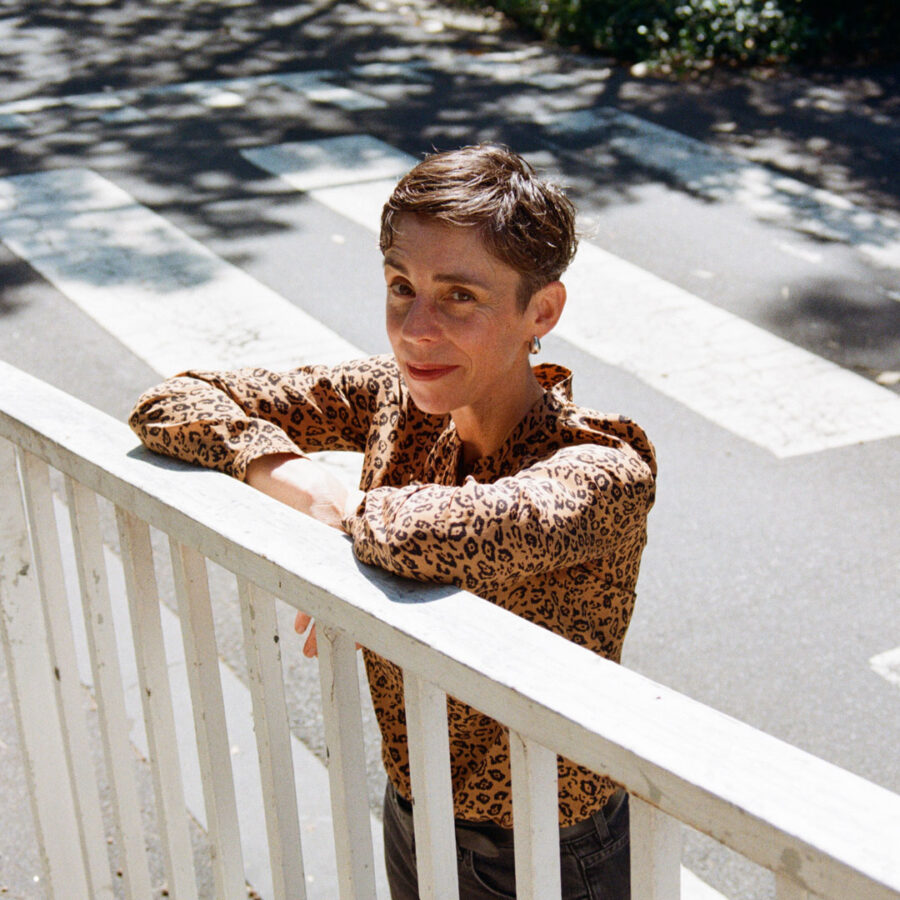
When we put together the first ever SRB reader survey, it was with an upgrade to our website in mind. Early 2016 will see the launch of a new SRB website. We’re grateful to all the readers who took the time to complete our survey; your responses have helped shape our thinking both about the redesign of the site and about our editorial direction in 2016 and beyond.
Less than 1% of survey respondents hadn’t visited a bookshop in the last year. Otherwise the cohort of readers who responded to our survey were a diverse group. You’re distributed across age brackets and across Australia, with the greatest concentration of readers in NSW and Victoria. Many readers described themselves as involved in one way or another in the literary sector (‘does failed novelist count?’, asked one) – but many did not. Roughly 15% of respondents read the SRB on their mobile phones – and the same percentage prints out hard copies of essays to read offline.
At the last minute we inserted an open question into the survey: what shouldn’t we change? Rather than asking readers to tick a box, we invited comments. Here, the responses were surprisingly consistent. ‘Please keep the essays long form.’ ‘Dedication to the long-form critical essay shouldn’t change.’ ‘The SRB must continue to publish in-depth, long-form reviews and criticism.’ Conventional web wisdom preaches the virtues of commentary that is both quick and brief. This may be expedient for a news site but it’s a poor fit for a literary journal. Although the website will look different in 2016, long-form critical essays will remain at heart of the SRB’s publishing activities. We had no plans to change it prior to the collation of our survey results, mind you – but it was gratifying to discover that most of you are invested in what the SRB does.
The divergent consumption of criticism by SRB readers particularly caught my attention. All SRB content is available free of charge – but SRB readers are not cheapskates who refuse to cough up for literary journals and magazines. In fact, SRB readers subscribe to a wide variety of local and international print publications, the most popular being the London Review of Books, with the Australian Book Review the local favourite. We were under no illusion that we were the sole source of critical insight for our readers – and are relieved to confirm that this is the case. We don’t seek to be comprehensive and on our current output of just a few essays each week, it would be a nonsense to imagine that we could be so. The SRB will rarely offer the first or the last word on any given topic. That readers are seeking out many perspectives on Australian and international literatures, rather than single arbiters is a sign that Australian critical culture is in good health.
SRB readers are not print purists either. We asked where readers encounter book reviews and discussions of literature and culture. Yes, many of you read newspapers, magazines and journals, but you also tune into literary culture via other media: podcasts, broadcast radio, TV. And almost half of you read literary blogs, use Goodreads, and check Amazon reviews now and then. Is the internet killing critical culture? Hardly. Too often hand-wringing discussions about the long slow death of criticism pit the long-form essay against the blog post, or worse, the tweet, in a zero sum game. This is unhelpful alarmism and we underrate the long-form essay (and its readers) if we insist that it can be knocked out by a succession of 140-character blows. Rather, the danger lies in conjuring up an imaginary reader who is devoted to print, horrified by the internet, and wishes for all her critical needs to be satisfied by the one outlet. She doesn’t exist – or if she does, we now know that she’s not reading the SRB.
Some readers want us to direct more of our energies toward work in translation; others are keen to see more attention accorded to contemporary Australian writers. We’ve been told we should consider diversity metrics in our commissioning and also that to do so would stifle editorial objectivity. There are readers who want us to make space for YA fiction, children’s literature and genre works and those who warn against getting sucked in by commercial fiction. We know that we’re not going to please all our readers all of the time – which is why, in the last few weeks, we’ve published essays on the late prose of W.H. Auden and on the experimental techniques of Kathy Acker, on Michael Farrell and on George Eliot. Provocative columns have appeared on the site on the myopia of the arts funding debate when it comes to cultural diversity, on whether literary prizes are the best way to distribute money to authors, on authors’ experiences of literary festivals, and on the limits of gender metrics.
Not everyone has been pleased by our emphases and we’ve copped flak, in particular, for the various conversations we’ve initiated on the concept of the middlebrow. The intensity of the reaction surprised us – but we welcome dissent. Personally, I’m inclined to view robust public contestation of my editorial decisions and the approaches of SRB contributors ultimately as democratic and useful. A mature critical culture isn’t monotheistic and it isn’t the role of a journal such as the SRB to massage consensus. Rather, we’re open to disruptions, to provocation, and to a diversity of critical perspectives. Although we prefer to maintain a general tone of civility on the site (one reason that you won’t see comments on the SRB in 2016, another being that a clear majority of readers strongly object to them), we’re happy to publish essays that are argumentative, even polemical. We expect our contributors to be courageous, ethical and independent in their criticism and we will defend them if their conclusions prove unpopular, as is not infrequently the case. In 2016 we will continue to charge our contributors with scrutinising received wisdom about taste, quality, the market and literary culture. In a relatively small literary scene like Australia’s, this is perhaps not a formula for popularity, especially with authors and publishers – but we’d be doing readers a disservice if we abandoned the critical in favour of the congenial.
Our first essay this week is by Gig Ryan, on Net Needle, Robert Adamson’s fourteenth book of poetry.
Net Needle indicates in its title the poem as net, an often-recurring, even talismanic word (as noun or verb) throughout his collections: ‘my hands net for the moth’s / faint dancing shadow’ (‘The Shining Incidents’, Swamp Riddles). The net is both catcher and sifter, with the needle able to repair and renew. Net Needle then is also the constantly revitalised net accentuating the craft of making – ‘They stitched their lives into my days’ (‘Net Makers’) – and achieves a precarious equilibrium through its scrutiny of life’s twists and reinventions, in which previous masks are abandoned or coalesce.
Next, Jocelyn Hungerford offers an ‘idiosyncratic, personal explorer’s guide’ to the work of Kathy Acker, via a reading of Acker’s correspondence with Australian cultural theorist McKenzie Wark, recently published by Semiotext(e) as I’m Very Into You. In ‘Nasty Things at the Dinner Table,’ Hungerford writes:
The straightforward description of I’m Very Into You as a book of collected emails does nothing at all to convey the remarkable nature of what was happening. By the mid-90s email was becoming generally available and popular; essentially it was a new medium, infinitely elastic in scope, allowing for both the intimacy of a long personal letter and briefer, more businesslike communications. There was a magical thrill about being able to communicate without picking up a phone, allowing for new kinds of friendships to be built.
Last month a symposium dedicated to the life and work of American novelist E.L. Doctorow was held at the University of Sydney. We are pleased to present Julian Murphet’s keynote address from this symposium, a discussion of Doctorow’s roaming spatial imagination:
What gripped me as I made my way through the oeuvre once again was a dialectic in Doctorow’s spatial imagination, that I can characterize no better than to describe it in terms of an alternation between patterns of belonging and trajectories of passage. There are whole novels devised to articulate and occupy a given space: Welcome to Hard Times, World’s Fair, Billy Bathgate, The Waterworks, City of God, and Homer & Langley. These last five, indeed, mark Doctorow out fair as one of the greatest novelists of the greater New York metropolitan area, and their prodigious reconstructions of lost urban worlds demonstrate the virtuous fixity of his spatial understanding of the USA…But then there are the novels which pull in precisely the opposite direction, away from spatial fixes, and toward a logic of sheer mobility and flux whose aesthetic exhilarations are unlike any other writer in my experience, above all Ragtime and The March, but also very much including the restlessness of The Book of Daniel and the drifting centre of gravity formed by Joe in Loon Lake, as well as the delightful spatial errancies of Andrew’s Brain.
Finally, in From the Archive, we turn to Melinda Harvey’s essay on another American innovator, Renata Adler. In ‘Is This A Novel?’ reflects on the re-release of two Adler novels:
Speedboat and Pitch Dark were sometimes not recognised as novels, or were seen to be new kinds of novels. Muriel Spark, reviewing Pitch Dark for theNew York Times, went so far as to claim that its ‘discontinuous first-person narrative’ inaugurated ‘a genre unto itself’. This is a tremendous compliment, and confirmation of Adler’s deep understanding of genre. What looks like wilful experimentation in her novels is actually a profound commitment to the novel’s roots.
